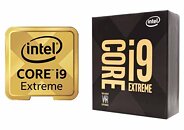- Joined
- Oct 9, 2007
- Messages
- 47,905 (7.37/day)
- Location
- Dublin, Ireland
| System Name | RBMK-1000 |
|---|---|
| Processor | AMD Ryzen 7 5700G |
| Motherboard | Gigabyte B550 AORUS Elite V2 |
| Cooling | DeepCool Gammax L240 V2 |
| Memory | 2x 16GB DDR4-3200 |
| Video Card(s) | Galax RTX 4070 Ti EX |
| Storage | Samsung 990 1TB |
| Display(s) | BenQ 1440p 60 Hz 27-inch |
| Case | Corsair Carbide 100R |
| Audio Device(s) | ASUS SupremeFX S1220A |
| Power Supply | Cooler Master MWE Gold 650W |
| Mouse | ASUS ROG Strix Impact |
| Keyboard | Gamdias Hermes E2 |
| Software | Windows 11 Pro |
Enthused with its IPC leadership, Intel is possibly planning a return to the high-end desktop (HEDT) market segment, with the "Alder Lake-X" line of processors, according to a Tom's Hardware report citing a curious-looking addition to an AIDA64 beta change-log. The exact nature of "Alder Lake-X" (ADL-X) still remains a mystery—one theory holds that ADL-X could be a consumer variant of the "Sapphire Rapids" microarchitecture, much like how the 10th Gen Core "Cascade Lake-X" was to "Cascade Lake," a server processor microarchitecture. Given that Intel is calling it "Alder Lake-X" and not "Sapphire Rapids-X," it could even be a whole new client-specific silicon. What's the difference between the two? It's all in the cores.
While both "Alder Lake" and "Sapphire Rapids" come with "Golden Cove" performance cores (P-cores), they use variants of it. Alder Lake has the client-specific variant with 1.25 MB L2 cache, a lighter client-relevant ISA, and other optimizations that enable it to run at higher clock speeds. Sapphire Rapids, on the other hand, will use a server-specific variant of "Golden Cove" that's optimized for the Mesh interconnect, has 2 MB of L2 cache, a server/HPC-relevant ISA, and a propensity to run at lower clock speeds, to support the silicon's overall TDP and high CPU core-count.

Intel probably learned from "Skylake-X" and "Cascade Lake-X" that an HEDT processor should match or exceed the mainstream-desktop part at everything (including gaming), so its buyers don't feel like performance of IPC-sensitive/less-parallelized workloads is being traded in for brute multi-threaded performance. ADL-X could hence even be a whole new silicon+package combination, with "Golden Cove" client cores, perhaps some "Gracemont" E-core clusters, and characteristic-HEDT features, such as more memory channels and more PCIe lanes; but most importantly, the ability for the processor to run some of its P-cores at very high clock-speeds.
View at TechPowerUp Main Site | Source
While both "Alder Lake" and "Sapphire Rapids" come with "Golden Cove" performance cores (P-cores), they use variants of it. Alder Lake has the client-specific variant with 1.25 MB L2 cache, a lighter client-relevant ISA, and other optimizations that enable it to run at higher clock speeds. Sapphire Rapids, on the other hand, will use a server-specific variant of "Golden Cove" that's optimized for the Mesh interconnect, has 2 MB of L2 cache, a server/HPC-relevant ISA, and a propensity to run at lower clock speeds, to support the silicon's overall TDP and high CPU core-count.

Intel probably learned from "Skylake-X" and "Cascade Lake-X" that an HEDT processor should match or exceed the mainstream-desktop part at everything (including gaming), so its buyers don't feel like performance of IPC-sensitive/less-parallelized workloads is being traded in for brute multi-threaded performance. ADL-X could hence even be a whole new silicon+package combination, with "Golden Cove" client cores, perhaps some "Gracemont" E-core clusters, and characteristic-HEDT features, such as more memory channels and more PCIe lanes; but most importantly, the ability for the processor to run some of its P-cores at very high clock-speeds.
View at TechPowerUp Main Site | Source







